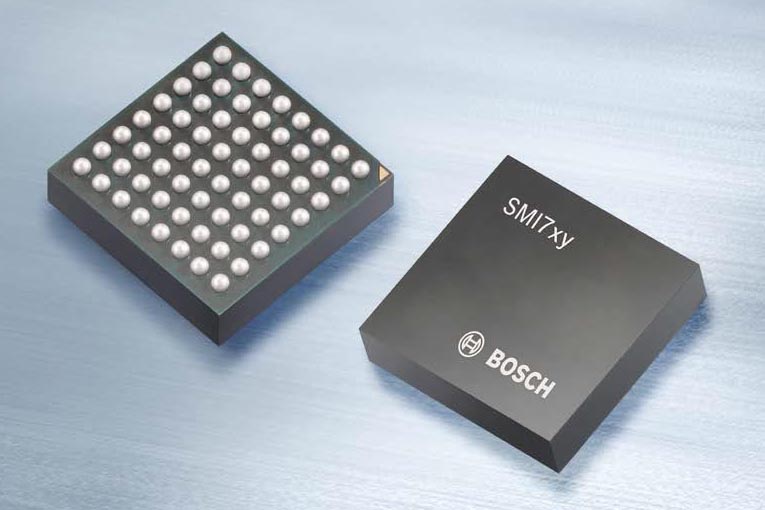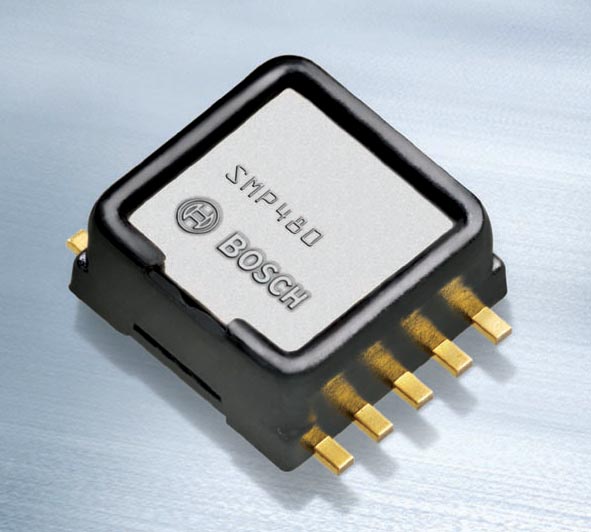- MEMS sensors have been used in automobiles for 20 years, and in consumer electronics for 10 years
- MEMS sensors are the sensory organs of modern technical systems
- Small, robust, intelligent, and energy-efficient
- Bosch is a pioneer and the global leader in the manufacture of MEMS technology
Small parts, big impact: they save lives, increase driving comfort, help conserve energy, and are an essential part of consumer electronics. “MEMS sensors are a key technology for the connected world,” says Dr. Dirk Hoheisel, member of the board of management of Robert Bosch GmbH. “They deliver high performance, but are also small, robust, and extremely cost-effective to manufacture in large volumes.” Bosch recently produced the five-billionth MEMS sensor at its plant in Reutlingen, Germany. MEMS is an acronym for microelectromechanical system. Bosch developed the underlying semiconductor manufacturing process itself, and has been manufacturing the sensors in large-scale production since 1995. “For 20 years, we have been developing smart technology for a growing number of different areas with real-life applications,” Hoheisel says. The first versions were used in motor vehicles to detect pressure and acceleration. Now, 75 percent of all sensors are used in consumer electronics. “Every second smartphone uses Bosch sensors,” Hoheisel says. The company is the leading global manufacturer of MEMS sensors.
Bosch – The pioneer of MEMS technology
The start of large scale production at Bosch in 1995 laid the foundation for modern technology. The current portfolio comprises acceleration, yaw-rate, mass flow, pressure, and environmental sensors, in addition to microphones. While it took 13 years to manufacture the first billion MEMS sensors, the Bosch Automotive Electronics division now manufactures the same quantity in less than one year at its production facility in Reutlingen, near Stuttgart. This is the result of skyrocketing demand. More than four million sensors are currently manufactured every day. These little helpers have an average thickness of between just one and four millimeters. If the five billion Bosch sensors were stacked on top of each other, the tower would be 12,000 kilometers tall; that is long enough to pass nearly all the way through the Earth, which has a diameter of 12,742 kilometers.
Game consoles, cars, and smartphones – all need MEMS sensors
 |
| The MEMS sensor SMI700. |
There are a wide range of uses for MEMS sensors. The SMI700 sensor, for example, records a vehicle’s rotational movements, lateral acceleration, and lean angle. It is at the heart of the ESP anti-skid system, which keeps the car more safely on course during critical situations. Another sensor, the SMP480, ensures quieter engine operation and also optimizes the engine’s air-fuel mixture in changing environments. This reduces fuel consumption, and provides for cleaner exhaust fumes.
 |
| The MEMS sensor SMP480. |
In 2005, Bosch established the wholly-owned subsidiary Bosch Sensortec GmbH, which offers a wide range of MEMS sensors and solutions for applications in the consumer electronics sector, including smartphones, tablets, and wearables. Inertial measurement units (IMU) such as the BMI160 in the remote controls of game consoles are responsible for gaming fun, for example. They transmit the movements of the player in real time with extreme precision. The acceleration sensors in smartphones ensure that the display changes orientation when the cellphone is turned. At the beginning of 2015, Bosch Sensortec unveiled another global first: the BME680. In one housing, this environmental sensor measures air pressure, moisture levels, ambient temperature, and, for the first time, air quality.
 |
| The Inertial measurement unit BMI160. |
 |
| The environmental sensor BME680. |
MEMS sensors make non-electronic objects smart
The next major technological revolution has already begun. In an increasingly connected world, things are learning how to communicate. MEMS sensors are an important technological component that is key to this process. Bosch Connected Devices and Solutions GmbH, established in 2013, develops and markets connected, sensor-based devices, and custom solutions for the internet of things. Programmed to be a smart technology and fitted with a microcontroller, miniature battery, and a tiny radio chip, MEMS sensors can process their readings and send them over the internet to a user’s smartphone, for example.
Tiny, intelligent, robust, and energy-efficient
It is essential for sensors to be as small as possible, especially for smartphones, tablets, and similar devices. The reason for this is that such devices are called on to perform ever more functions – but have to do this in ever less available space. In consumer electronics, MEMS sensors are less than one millimeter thick. Some of the components inside sensors are a mere four micrometers (μm) thick – that is 17 times thinner than a human hair. These tiny parts are nonetheless robust and very powerful. They also have to be extremely energy-efficient. An acceleration sensor for the alarm system in a motor vehicle, for instance, has to be ready for use at all times, yet draw as little power as possible from the car battery. And in consumer electronics, low energy consumption is just as important, since it helps a smartphone’s battery last as long as possible.
